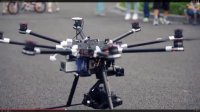SleepyC
www.AirHeadMedia.com
Ok.. so the spy shots of the new DJI S1000 started to surface and it looks like this:
View attachment 14872
So it looks like DJi is staying with the dihedral concept even with the stiffer carbon tube booms.
Has anyone tried this with motor shims on a normal Cinestar or (insert any other pro frame name)
I can see the benefit being a better centering ability since all the motors thrust are pushing slightly towards center.
So I guess i am asking why has no one else taken this approach? Is there a good argument why this is not good?
View attachment 14872
So it looks like DJi is staying with the dihedral concept even with the stiffer carbon tube booms.
Has anyone tried this with motor shims on a normal Cinestar or (insert any other pro frame name)
I can see the benefit being a better centering ability since all the motors thrust are pushing slightly towards center.
So I guess i am asking why has no one else taken this approach? Is there a good argument why this is not good?

